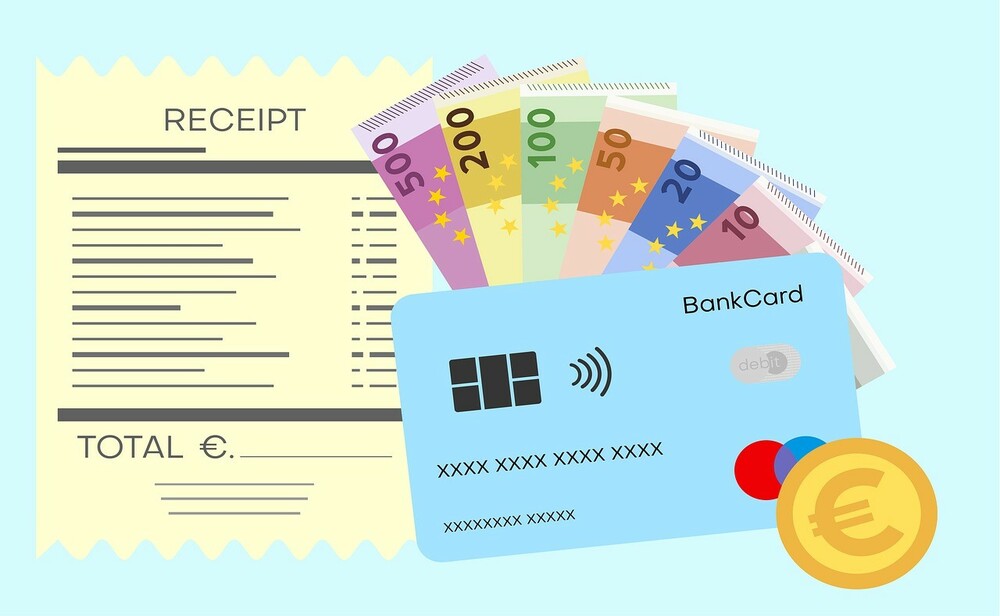What is 609 Dispute Letter? Does It Work? (With Samples)
What is the 609 Dispute Letter?
A 609-dispute letter is a letter that you can send to the credit bureaus to get negative items removed from your credit report. It’s a legally questionable letter because it violates the Fair Credit Reporting Act (FCRA). However, it can be used to get bad credit information removed from your credit report, so some people choose to use it. Others get rid of bad items through other means. The 609 letters are listed as an illegal scam in many legal guides, and you can read more about it in this legal guide. To start with, let’s look at how the Fair Credit Reporting Act defines fraud, and see if a credit report can contain inaccurate or incorrect information.

What is a Fraudulent Transaction?
Generally, a credit bureau only has to report your information accurately when the data it reports is accurate. You can usually dispute something inaccurate. But if you are referring to fraud, a credit bureau is supposed to accurately report only the following types of transactions:
- Fraudulent and unauthorized charges
- Verification of identity
- A job referral
- Services or goods or money or property not for sale
What Do the Credit Bureaus Say?
It’s important to understand that 609 letters are a legal method for consumers to report negative items, but they’re still a scam. As a result, the credit bureaus have declared that they won’t provide consumers with a 609 letter. What you can get as a result of sending a 609 letter is to get more information about your account removed from your credit report.
“Consumers who provide the name, address, and telephone number of the creditor or debt collector making the report may request that this item be removed.”
– The Federal Trade Commission
The credit bureaus also note in their agreement that they will not disclose a consumer’s personal information in a dispute letter, or response to a 609 letter.
“Consumer dispute letters and 609 letters may not include personally identifiable information, such as name, address, social security number, or credit card number.”
– The FTC
What Are the Scams?
For the person who gets a 609-credit dispute letter, the credit bureaus are still not going to provide it, but the person might be able to get a response that only states the item is not on the credit report. They might even provide you with an official letter that says they won’t provide you with a 609 letter.
But at the time the 609 letters were provided, the credit bureau did not provide a letter saying that the item was not on the credit report. Many scammers use this to scare consumers into paying for their services. Also, even if you do get a response, the credit bureau might not take action on the item that you claim to have reported.
“Even if the bureaus ask the creditor to remove the item or the debt from their report, they may not be required to remove the item if the creditor refuses to do so.”
– The FTC
But they’re not required to do anything either. Because of this, you could still pay to remove the item. But in some instances, you can get a full refund.
Is the 609 Letter Legally Legit?
The Fair Credit Reporting Act is a federal law that makes it mandatory for credit bureaus to maintain accurate and fair credit reports. This law does not forbid you from requesting information be removed. However, you shouldn’t send any of the 609 letters on this page or any similar email. You’re not allowed to do this.
Another thing to understand is that you don’t need to send a 609 letter to dispute a negative item on your credit report. You can also dispute an item by sending a letter with a plain text copy of the item to the credit bureau. It’s also possible to dispute information on your credit report by writing a letter to the creditor. You can use a letter template from this page.
“If you believe the item(s) on your credit report is inaccurate or incorrect, you may request that the information be corrected.”
–The Federal Trade Commission
If you’ve sent a letter requesting that the information be corrected, but you haven’t gotten a reply, it may be a red flag. If you sent a 609 letter in response to a debt collector asking for repayment, but you haven’t received a response, it may also be a red flag. If you sent a 609 letter after making a formal dispute over a debt, but the creditor hasn’t corrected the information, it’s a red flag.
Even if you sent a 609 letter in response to a debt collector, but you haven’t received a reply, you can make a formal dispute by contacting the creditor or using your credit bureau’s dispute system. Also, it’s possible that the credit bureaus aren’t removing negative information from your credit report because they don’t want you to dispute it. If this is the case, then you may have to sue them for the information.
Are there good alternatives to 609?
No, there aren’t. You can’t dispute items by filing formal disputes. However, you can use these other methods to get the information removed from your credit report.
Review your credit reports
Reviewing your credit reports is the most effective way to get negative information removed from your credit reports. It will take some effort, and you’ll have to contact each credit bureau individually, but it can be very effective.
Reviewing your credit reports is a good way to help you stay on top of your credit health, as it’s likely that negative information will be on your credit report for at least a few years. A review of your credit reports may take a while to get all of the negative information removed, but it’s still well worth the effort.
How to Submit a Full Negative Item Correct Request?
There are several different ways to report something as a negative item on your credit report. If you report an item as a result of a dispute, you can see what the credit bureau does with your request.
Request for the duplicate item(s)
Sometimes, you can request a full item replacement if it’s part of a duplicate report. A duplicate report is one report with two or more items listed. If you’re removing information that you believe is inaccurate, it makes sense to request that the bureau replace it with something. You can request a full item replacement if you believe that the report you’re removing information from is a duplicate report. That is, you believe that the information that’s listed in your report is different from the information listed in a different report.
Generally, it’s a good idea to request a full item replacement, as this gives you a chance to remove the inaccurate item completely. If you request a full item replacement, you can’t dispute information that’s not listed on a duplicate report. So, you won’t be able to dispute an item unless you report something that’s listed in a different report. The thing to understand about a full item replacement is that you can’t submit the item on its own. You need to report the item in its entirety. This includes negative items, such as past due debt.
For example, if you’re removing a collection account from your report because you believe it’s inaccurate, you can’t just report that. You have to report all of the information on the account, even if it’s not listed on the other report. The reason why you can’t report the account by itself is that the credit bureau doesn’t make the change for that item. The information is removed from your report when you make a request.
The credit bureau reports the removed item to the three credit bureaus. The information is added to the credit reports of the other two credit bureaus. The information will be available for the public to see, once the credit bureau compiles the credit reports. This means that if you submit a partial negative item request, it will show up as a partial negative item, even if you report everything listed on the account. You can’t simply submit a credit report, and then submit the negative item. You have to report the entire account.
So, if you’re removing a negative item on a past due debt from your credit report, you need to report the entire account, including the collection account information, on your credit report.
Here’s what it looks like:
- The account name and the account number are removed.
- All of the account information is removed.
- The entire account is replaced with a statement that says that the account is paid in full.
- If your request is for a full item replacement, the credit bureau will then add the item to the report.
Full item replacement can be time-consuming. It might take the credit bureau weeks to compile all of the accounts that you’re requesting to include. This could result in a delay in getting an item removed from your credit report.
Request an item removal request
Sometimes, you might request an item removal request, even if you’ve already reported an item to your credit bureau. This isn’t for every negative item. You’re going to have to provide the credit bureau with more specific information about the negative item.
To do this, you’ll need to include the following information in your request:
- The specific account number, the date the account was opened, the account owner’s name, and the account size.
- The specific date when the account was paid in full.
- The specific account information that you need to be removed.
This is to make sure that the credit bureau will not incorrectly remove the information about the payment. You can submit a request for an item removal request in writing to the credit bureau. When you submit the request in writing, you’ll need to provide all of the information that you’ve reported about the item, in addition to the requested item. Once you submit the request, it will take at least several weeks to compile the credit report that you’re requesting.
You can request an item removal request online
A better option is to file a request for an item removal online. With online item removal requests, you don’t need to submit a written request, and you can easily track your request. You can file the request directly on the credit bureau’s website.
What to do if the request doesn’t go as planned?
If the request for an item removal request doesn’t go as planned; you can file a dispute in the dispute resolution section of your credit report. You can do this right away. Contact the credit bureau and let them know that you’ve filed a request for an item removal, but that they have not removed the item. When you contact the credit bureau, ask them why the item wasn’t removed, and if the credit bureau’s investigation into the negative item is complete.
You can either leave a voicemail or send them a letter if you prefer to write. Don’t contact the credit bureau if you don’t have an item that you’d like removed. Don’t file a dispute unless you have an item that you want to be removed. The item removal requests that you want to be removed will generally not go away. It’s important to remove these items from your credit report so that they’re not a drag on your credit score.
Conclusion
609 dispute letter requests can take a lot of time to make, but they’re all important to your credit score. Avoiding these items from your credit report is important to your credit score, as they can cause your credit score to drop. If you don’t have an item that you’d like removed from your credit report, and you don’t have an item that you’d like to include on your credit report, you should submit a request for item removal.
The process of removing an item from your credit report is complicated, but the time it takes to get an item removed from your credit report is relatively quick. As long as you give credit bureau staff enough information, you can remove a negative item from your credit report within a couple of weeks.





